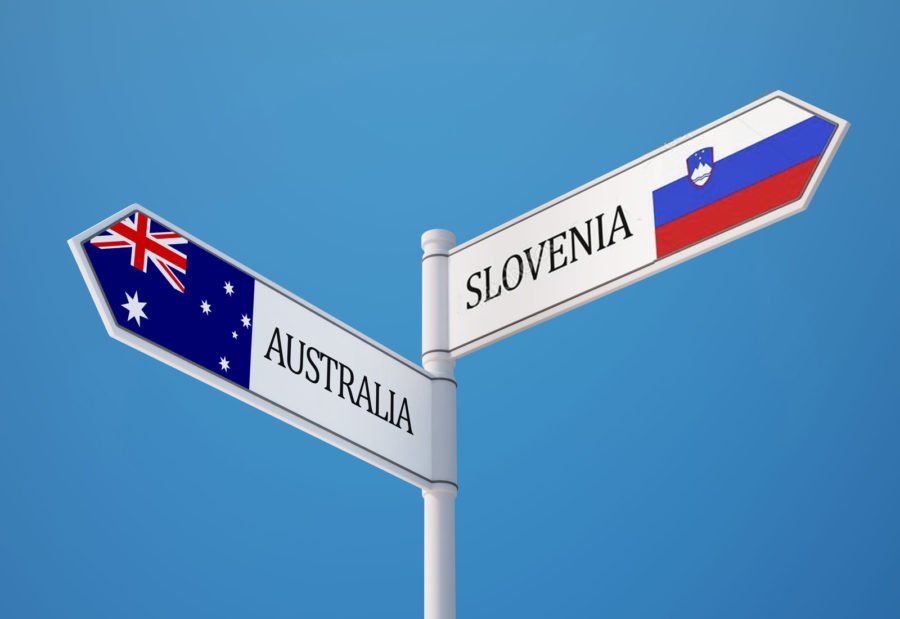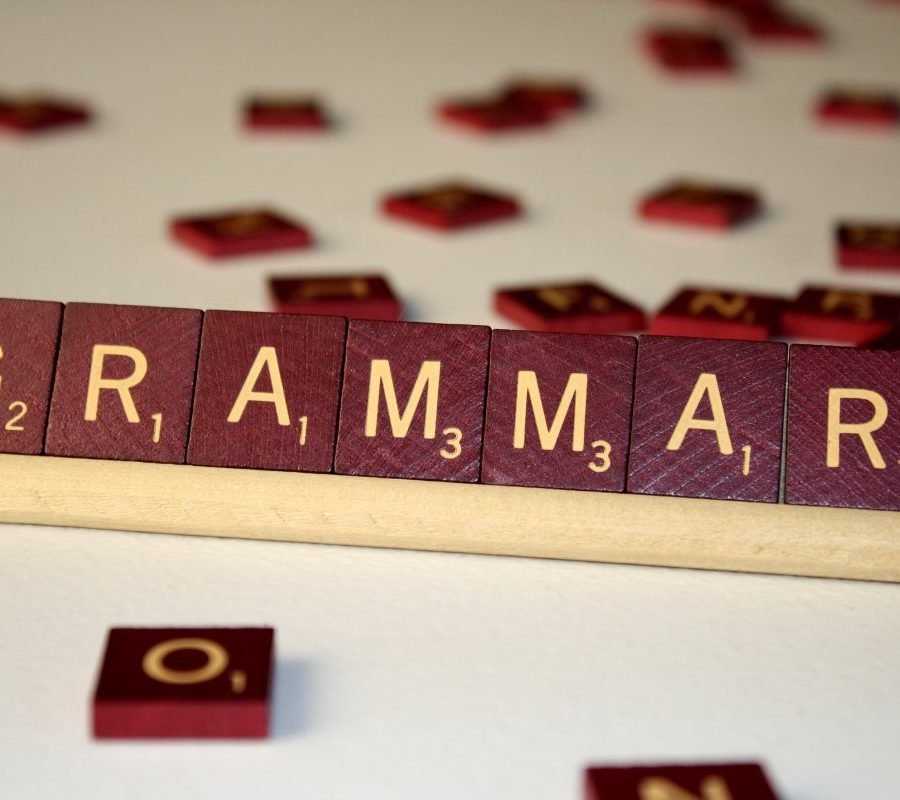
The Book: Slovenian Language in Australia

Students of Slovenian 1977 – 2005
These are the students who attended the Slovenian language classes at secondary level at the Victorian School of Languages from 1977 to 2005. Altogether 504 students, of these 82 students completed the Higher School Certificate for Slovenian language (matura iz slovenskega jezika).

Slovenian language studies in Victoria – Bibliography
The series of articles marks the process of events, issues, and information that Aleksandra Ceferin wrote for the Slovenian community since 1976, and published for the most part in the monthly journal Misli, later also in Glas Slovenije, Rodna Gruda, Slovenščina v šoli, MLTAV Newsletter (Modern Language Teachers Association of Victoria).

ISSV Arhivi 1976 – 2002 (in Slovenian)
The document is a description of the contents of ISSV Archives in 1976 – 2002. It was sent upon request to historian and researcher Aleksej Kalc for the information and records of the Scientific and Research Centre Koper of the Republic of Slovenia in December 2002.

Community language schools
The first attempt that led to a continuous teaching tradition took place in 1960 at the Slovenian Religious and Cultural Centre in Melbourne with the support and encouragement of Fr. Basil Valentin, the Franciscan priest, whose efforts for the Slovenian community became legendary.

Starting classes in Saturday school
In 1976 colleagues were contacted in Slovenia, Trieste, and the USA regarding suitable textbooks, which had to be approved by the school. It was fortunate that we had willing friends who made sure that books were sent in time for the beginning of the school year. In the USA we were assisted by Prof Edi Gobec (Slovenian Research Center of America) and in Trieste Prof. Martin Jevnikar collected a sufficient number of lower secondary and primary school readers to supply all three centres.

Teaching resources
Slovenian primary school readers were a rich source of materials, although by and large the lower grades were both too difficult and too simple. Useful were illustrations and certain literary forms such as humorous children”s poems and riddles. A wide variety of resources are used for the language and cultural studies of contemporary Slovenia and are referenced in the curriculum, the emphasis is on authentic language materials, Web resources, video, audio materials, media sources such as radio, journals, magazines, newspapers, television and the Internet.

Slovenian VCE students
Altogether 82 students completed the Victorian Certificate of Education from 1980 to 2005. They were dedicated young Slovenian Australians, who dedicated a great deal of effort to attend classes on Saturdays, often travelling some distance.

STAV 1976 – 1998
The main aim and purpose of STAV was to maintain the teaching of Slovenian language and culture in the secondary school system of Victoria.
Activities undertaken by STAV during the following years included regular meetings of teachers, seminars and workshops, development of syllabi and test papers, the acquisition and introduction of teaching resources. There were enrolment drives at the beginning of each school year, meetings with parents at various centres around Melbourne, publication of articles in Misli, radio talks and interviews.

Victorian School of Languages
The school proved a successful model, in time adopted by other Australian states in their efforts to provide for all the languages required by a growing, linguistically and ethnically diverse immigrant population. With its flexible structure it was able to provide for the language requirements of the Australian multicultural society. In Victoria it expanded progressively in response to Victoria”s language needs in the city and country areas.

Teaching Slovenian
The teachers were all experienced and developed their own strategies to deal with a range of problems. While they had extensive teaching materials, these needed to be adapted to the capabilities of the students. It was soon discovered that no suitable course book existed, so teachers made use of the available materials, selecting from the texts the most interesting, highlighting some aspect of Slovenian culture, and adapting it to the students standard. In this, they were remarkably successful.

Victorian Certificate of Education
It was a great new approach to the study of languages. Students were given a sense of what it means to communicate and use the language in social interaction. For example the students in 1991 were given as a task in Unit 1 a conversation to be prepared by two or three students working together. The situation was a chance meeting in a chosen setting between the students and a person from Slovenia, who heard them speaking in Slovenian. They expressed amazement, introduced themselves, exchanged some information about where they were from and whom they were visiting.

VSL course outlines
The topics developed for the Slovenian Course Outlines reflected a strong bias towards culture and cultural activities. They ranged from the personal to a community-based focus. At lower levels focusing on customs and traditions and broadened at higher levels by exploring historical and literary themes, integrating as much as possible the personal and social fields in the suggested activities and the texts selected for study. Literary themes were explored, including the life experience of the poet, the historical context of his literary productions and personal experience of family and friends.

Students writing
During the year students were required to submit several written pieces, in different types of writing and a variety of formats. They were required to write in an imaginative or personal or informative or persuasive style, choosing at least two different types.

Beginnings of cultural activities
Misli of those early years also reported on Slovenian traditional festivities. New Year, Easter, St. Nicholas, and Christmas were celebrated with all the traditional icons – the religious rituals that gave the event meaning and all the other ways of marking the occasion, Christmas tree and manger, traditional dishes and potica, music and dancing. Above all it was the Slovenian togetherness that gave comfort and made the new country less alien.

Archives of Institute for Slovenian Studies of Victoria Inc. 1976 – 2009
The archives of the Institute consist of over 2,000 documents. The archivist is Aleksandra Ceferin who has collated and maintained documents of the activities connected with the teaching of Slovenian language in the school system in the state of Victoria from 1976.

Slovenian Education Associations
We have established in Australia two Slovenian educational associations, both in Victoria – Slovenian Teachers Association of Victoria (1976) and The Institute for Slovenian Studies of Victoria (1998). Both functioned within the context of Victorian and Australian professional educational language associations and the state language school – Saturdays School of Modern Languages (later named Victorian School of Languages) while addressing the needs of the descendants of Slovenian migrants growing up in Australia.

ISSV 1998
In 1998, the Slovenian Teachers Association of Victoria (STAV) underwent a change of direction and broadening of scope. Slovenian classes were diminishing and we were now teaching the third generation of students, who no longer spoke or heard Slovenian at home. Slovenian was taught as a Second Language to fewer students and lacked suitable teaching resources. The Institute of Slovenian Studies of Victoria (ISSV), established in 1998, represented a creative response to new challenges, using modern technology to resist cultural fragmentation of Slovenian community in Australia.

ISSV Projects 1998 – 2009
It was based on a broad concept and vision for the maintenance of Slovenian identity – a sense of who we are and where we are going in the modern world. The website is an expression of our sense of pride in our origins, our language, our continued existence as a separate independent people, despite the pressures brought to bear on us to change. Thezaurus is also a vehicle for further projects on the Web, structured in such a way that projects can be included and expanded according to need. The structure is flexible and dynamic, so that new projects can be added.

Victorian Secondary Certification Authorities
Victorian Curriculum and Assessment Board (VCAB) was given the mandate to prepare a major curriculum and assessment educational reform at the senior level. Victorian Curriculum reform was completed, and ready to begin implementation in 1991. The first model courses were developed for all areas on the principle, that each teacher implement a two year senior studies course according to the strictly defined structure , tasks and aims, with the flexibility in the choice of topics, particularly in the case of English and Languages Other Than English (LOTE ).

VUSEB (1976-1978)
In June 1976 Aleksandra Ceferin approached Victorian Universities and Secondary Education Board (VUSEB) regarding the certification of Slovenian as a Higher School Certificate subject and received a positive response from the Head of the Committee for Balto-Slavonic languages, prof Jiri Marvan at Monash University. She prepared the required documentation including sample examination paper and a list of resources for the teaching of Slovenian.

VCAB (1986-1991)
The VISE educational reform was followed by a second complete overhaul of senior secondary school curriculum and assessment. In 1986 a new authority, the Victorian Curriculum and Assessment Board (VCAB) set up nine Fields of Studies Committees (FOSCs) for all areas of teaching. Aleksandra Ceferin was appointed to the Field of Studies Committee for Languages Other than English (FOSC LOTE). She was one of the twenty-four members, comprising secondary teachers, experts and theorists on a number of languages.

VISE (1980-1986)
Following a name change of the accreditation body, to Victorian Institute of Secondary Education (VISE), Victoria conducted a major educational reform in 1978 and 1979, which affected the accreditation of Slovenian as an HSC language. Initially there was a delay of two years before the accreditation procedure could begin. Secondly Slovenian became the first and pioneer subject, so-called HSC Group 2 subject under the new HSC assessment scheme. It became a model for all subsequently accredited languages.

Arrival
Life was hard for the migrants in the beginning. Many had to do physically demanding work to which they had not been accustomed. There was a great shortage of accommodation in the cities. Families were separated. Men were employed wherever needed, and lived in hostels. Families were placed in family hostels elsewhere, often at a great distance from the men. Such was the family hostel in Mildura, in the middle of the grape growing country on the Murray River.

BoS (1993-2001) and VCAA (2001-2006)
In 2001 a review of the two-year VCE course brought some changes. The major change is that a key writing assignment during Year 12, the so-called CAT 1 was replaced with a series of eight strictly defined tasks or Outcomes in Year 11 and six tasks in Year 12. They were to be completed under test conditions and assessed by the classroom teacher.

Curriculum and Standards Framework (CSF) for LOTE and Slovenian Language
Following the consolidation of the VCE levels 11 & 12, the CSF reform of all levels of school education called CSF began, initially with intensive series of professional development sessions, which included curriculum development.

Linguistic elements
Students should understand the regularity of the relationship of sounds and letters in Slovenian, from the point of view of both accurate pronunciation and spelling in written Slovenian.

